2. Case 2: Renal Subcapsular Abscess
A 14-year-old girl, in previous good health with no specific medical history after being delivered at 39 weeks of gestational age with a body weight of 3,500 g, was admitted to the hospital with a fever of duration of 8 days and right flank pain. The patient was diagnosed with renal abscesses of the right kidney on abdominal CT. Intravenous antibiotic treatment for 7 days relieved the patient’s clinical symptoms; however, follow-up CT revealed that the size of the abscesses had increased significantly. Furthermore, the patient was newly diagnosed with type 2 diabetes and was referred to our hospital for proper evaluation and treatment. Upon admission, the patient was alert and physical examination findings were: pulse rate, 85 beats/min; respiration rate, 20 breaths/min; body temperature, 36.9℃; blood pressure, 130/95 mmHg; body weight, 88 kg (100th percentile); height, 163 cm (75th percentile); BMI, 33.12 kg/m2; and no other findings except tenderness on the right kidney angle.
At the time of first admission to the referral hospital on January 25, 2021 blood tests revealed the followings: WBC count, 14,120/µL (neutrophil 71.7%); hemoglobin, 10.9 g/dL; hematocrit, 34.6%; platelet count, 302,000/µL; ESR, 71 mm/hr; CRP, 16.26 mg/dL; and BUN/Cr, 9.1/0.47 mg/dL. Urine test results were as follows: pH, 6.0; WBC, 10–29/HPF; and RBC, 5–9/HPF. Later, Klebsiella pneumoniae grew to more than 105 CFU/ml from urine culture.
Laboratory tests performed at our hospital on February 1, 2021 showed leukocyte count, 8,700/µL (neutrophil 61.0 %); hemoglobin, 9.9 g/dL; hematocrit, 31.6%; platelet count, 600,000/µL; ESR, 94 mm/hr; CRP, 4.52 mg/dL; BUN, 8.0 mg/dL; and Cr, 0.45 mg/dL. Urine examination showed no pyuria or hematuria, and no pathogens were cultured. However, a small amount of non ESBL-producing Klebsiella pneumoniae continued to grow from the pus initially drained by PCD on the second day at our hospital.
The initial CT performed at the referral hospital on January 25, 2021 revealed two abscess lesions in the upper and lower poles of the right kidney that were 2.0 cm and 1.0 cm in length, respectively (
Fig. 3A). On the follow-up CT on February 1, 2021, 7 days after antibiotic treatment, the abscesses had increased in diameter to 4.5 and 2.0 cm, respectively (
Fig. 3B), and the patient was transferred to our hospital.
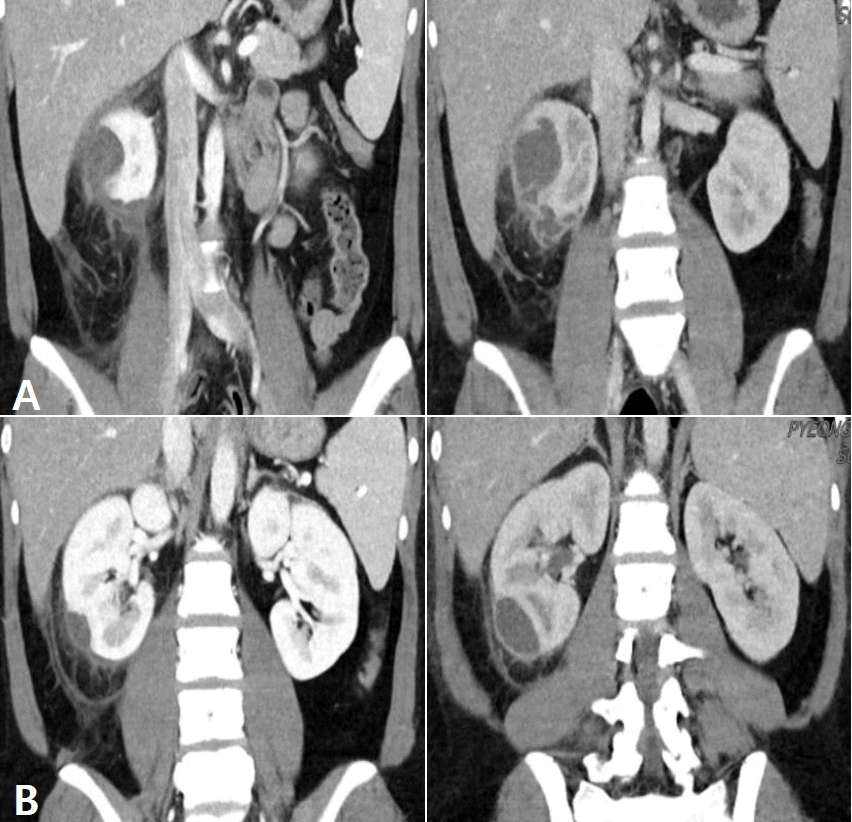 | Fig. 3.Renal computed tomography on January 25, 2021 showed abscess formation in the upper and lower portion of right kidney (A) and the follow-up exam on February 1, 2021 revealed that the size of abscesses had expanded (B). 
|
On arrival at our hospital, we reviewed the previous CT scans and confirmed the subcapsular positions of the abscesses, based on the findings that the renal cortex was compressed by the pus pockets, but still preserved. Therefore, an 8.5 French catheter was inserted to drain the pus (
Fig. 4A) and a VCUG study performed 3 days later revealed no sign of reflux (
Fig. 4B).
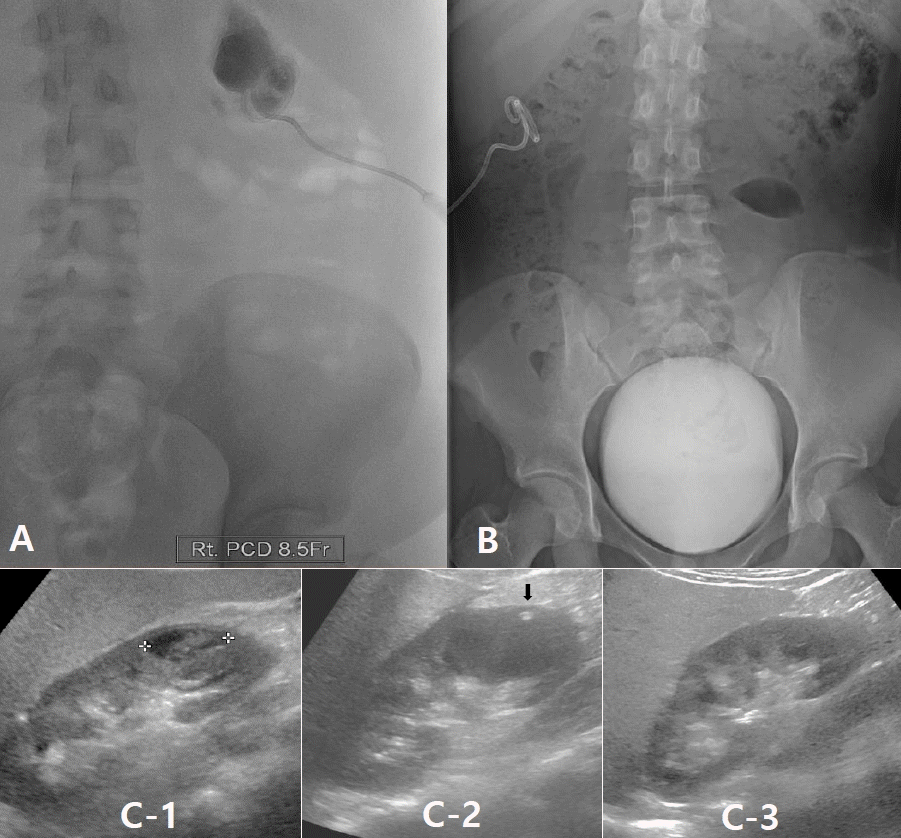 | Fig. 4.A percutaneous drainage catheter was inserted into the subcapsular pocket to drain pus on February 2, 2021 (A) and VCUG was performed on 3 days after admission with no evidence of reflux stream (B). Renal ultrasonography on January 25, 2021 showed an abscess at the lower pole of the right kidney (C-1). This lesion disappeared 4 days after PCD, and the PCD catheter tip was noted (arrow) (C-2). Follow-up examination on February 24, 2021 showed complete recovery of the right kidney (C-3). 
|
On renal US performed on January 25, 2021, the sizes of the right and left kidneys were found to be 11.8 cm and 11.2 cm, respectively (The average kidney size of Korean female adolescents is as follows; right 9.68 cm, left 9.96 cm). The findings indicated the presence of an abscess at the lower pole of the right kidney, measuring 2.0 cm in diameter; another abscess was seen at the upper pole (
Fig. 4C-1). Sequential US studies showed regression in the size of the renal abscesses compared to their initial appearances on January 25, 2021. Four days after PCD, US showed only the catheter in cross-section, with no evidence of the abscesses (
Fig. 4C-2); the measured sizes of the right and left kidneys were 12.7 cm and 12.0 cm, respectively. This renal enlargements in the absence of any abscess suggest that parenchymal in flammation still remains. The catheter was removed 5 days later. The final US performed 3 weeks later on February 24, 2021, showed that there was no abscess and both kidneys returned to normal in shape and size (right: 11.0 cm, left: 11.5 cm) (
Fig. 4C-3).
For the treatment intravenous (IV) cefotaxime was started on January 25, 2021 and IV amikacin was added on January 28, 2021 in the previous hospital. Since we do not know the results of urine culture test at the previous hospital, we only added PCD procedure and did not change the antibiotics, to cover potential gram-negative bacteria and resistant ones, which are common causes of abscesses.
Using the PCD procedure, 35 mL of pus was drained during the first 8 hours, and then 5–14 mL for the next days. Complete reduction in the size of the abscess was confirmed on the 4th day, and the PCD catheter was locked and removed on the 7th day. On the 9th day after admission, the patient was discharged from the hospital with oral antibiotics (cefixime). In total, third generation cephalosporin antibiotics was administered for 15 days and
IV amikacin for 12 days. We did not quantitate the amikacin level since the serum Cr level was 0.47 mg/dL (normal range: 0.3–0.7 mg/dL) on the 1st day of hospitalization and 0.52 mg/dL on the 6th day of hospitalization. For the next 6 months, there was no recurrence of UTI and the latest DMSA scan on August 18, 2021 showed full recovery from the large photon defect in the lower pole of the right kidney compared to the initial scan on February 3, 2021 (
Fig. 5).
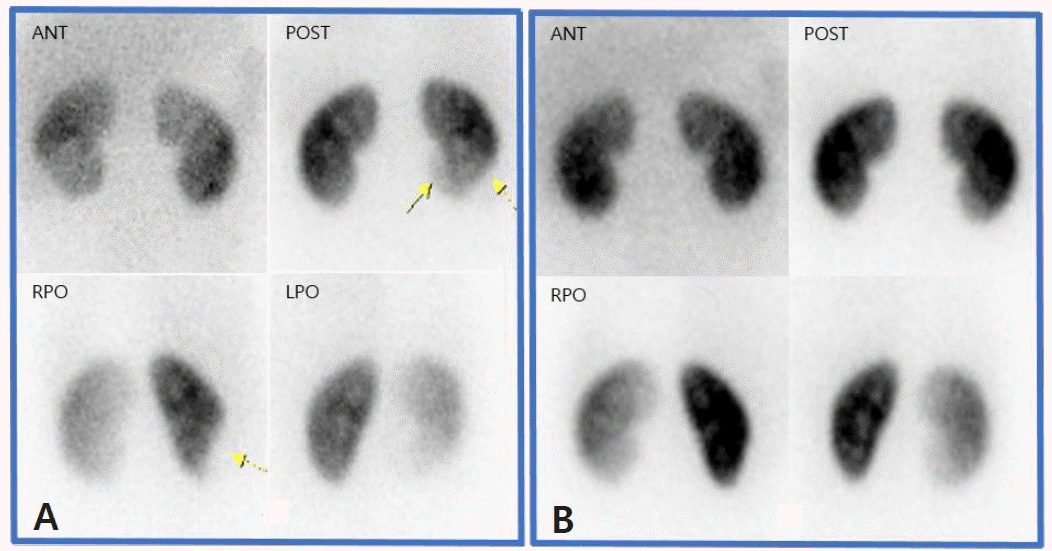 | Fig. 5. Tc-99m DMSA renal scan on February 3, 2021 showed large photon defect in lower portion of right kidney (A), and the lesion completely disappeared on the follow-up exam after 6 months (B). 
|

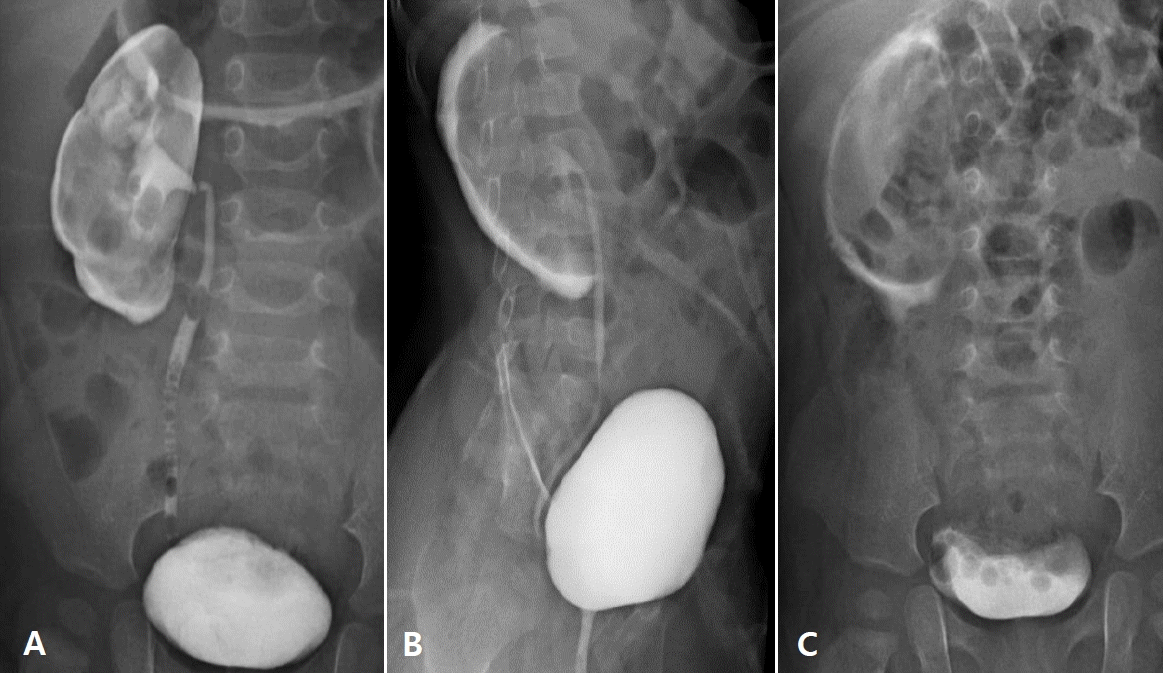





 PDF
PDF Citation
Citation Print
Print





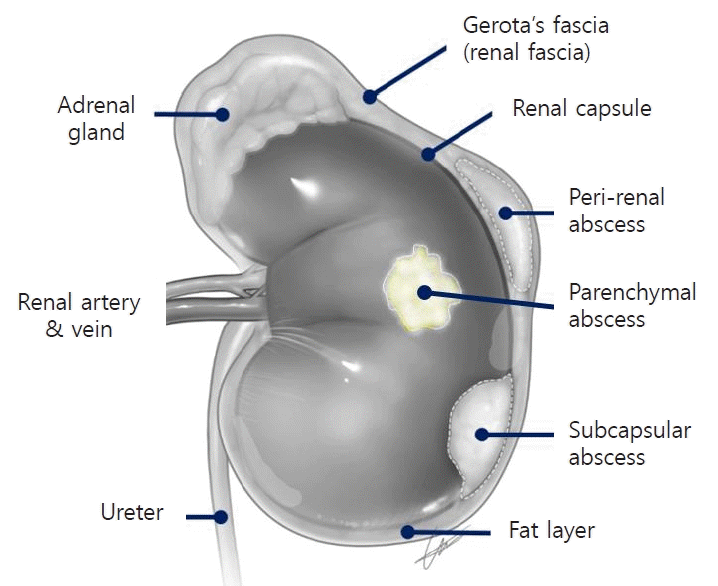
 XML Download
XML Download